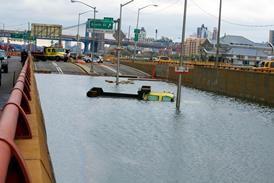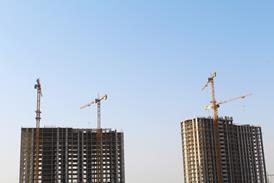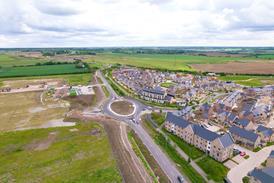In the electronic security sector, the advent of remote monitoring was hailed only a few short years ago as a natural progression and extension of technological advance, particularly in the telecoms industry. It was yet another bandwagon, this time bought into by a motley crew of installers, manned security contractors and telecoms providers.
All well and good, but is there any proof about what's really happening regarding CCTV remote monitoring centres?
The short answer is that it very much depends on who's doing the talking. In other words, there are the normal volleys of mixed messages and the inevitable curse of misinformation. That's understandable, as there's very little accurate information available aside from word of mouth.
To most outsiders – ie the potential service customers and the public at large – CCTV remote monitoring centres conjure up pictures of bored, untrained operators sleeping through incidents. Surely it's not asking too much to expect the industry to indulge in some public information distribution to the contrary?
Remote monitoring: the end users
Risk managers are the principal customers for remote monitoring. The latest research shows that something like 24% of service buying decisions are now being made by IT directors, with a further 22% being the prerogative of the company finance director. A fact emphasised by The Corps' commercial director Patrick Dealtry. "As a rule," states Dealtry, "the authority for spending normally requires some form of Board level approval."
Like any other security 'product', remote monitoring can only succeed if it fulfils an identified market need. This part of the surveillance equation, though, is all-too-often forgotten. Thus the best way of investigating the subject itself is to start at the beginning of the customer process, instead of the service provider viewpoint.
All organisations have a purpose. Some exist to trade and make a profit, while others provide a public service. Given this truism, there are certain matters that demand the risk manager's attentions.
First of all, they need to carry out a quantified risk assessment of their organisation and its activities. That will lead to a consideration of contingency plans and insurance provision. By the time they come to consider CCTV and remote monitoring, they have already been through a complex internal planning process. Therefore, it's of some benefit to the security industry to acquaint itself with these matters, instead of trying to provide solutions to problems without digging deeper into their roots.
There are several drivers for risk managers, but the two that relate directly to CCTV remote monitoring are the security of people and the security of goods. The former requires little explanation, while the latter arises from a very important source – the insurance business.
It's not trite to suggest that all business within the security industry is conducted at the behest of insurers. Without providing the recommended level of protection to people and goods, no organisation can cover the risks identified. If it's a commercial concern, it will be unable to trade to the level required.
Benefits to the customer base
What, then, are the benefits claimed by CCTV remote monitoring service providers? The most important is reduced costs for the customer, as there's no longer a requirement for 24-hour manned security on site.
Second, there's the plus-points to be had from properly trained monitoring staff. Then there's a guaranteed Service Level Agreement that includes response duties. These are all interesting gains for any customer which form the very basis of remote monitoring's appeal.
Let's take a look at each of these benefits in turn. Cost savings are a major incentive for any organisation. In fact, this is normally the main driver for such decisions, as the risk manager has to obtain agreement from the finance manager.
The costs of providing security cover are now under significant pressure due to a number of factors. The first of these is the introduction of the National Minimum Wage. No longer can security officers be employed at disgracefully low rates of pay (we hope!).
Then there's the Working Time Directive, which should spell the end of officers having to work ridiculous numbers of hours each week to earn a living wage. In addition, Health and Safety regulations – including the Lone Worker Regulations – mean that additional cost is somewhat inevitable.
Brian Geary, managing director of Broadland Guarding, adds: "At Broadland, we've managed to pick up some new manned security business in support of remote monitoring."
Properly trained staff is an obvious essential for any important investment. This removes the bad public image of the sloppy CCTV operator. It also brings the benefit of a service being correctly delivered. A serious consideration in view of differing levels of service competence. After all, the only purpose is to deliver the customer's requirements.
The equipment and staffing of the remote monitoring centre also require some scrutiny. Too often, there's been a tendency to assume that basic training and some 'boxes on the table' will provide an acceptable operation. Not so.
The stated function of the remote monitoring centre is to provide a 24-hour, 365 days single service to remotely monitor CCTV pictures transmitted from the customer's site to the monitoring centre.
The following actions can be carried out: police, key holders and security staff may be contacted, doors opened and closed as requested, access controlled and ID verified out of normal working hours, and suitable site equipment monitored and remotely switched on or off. The Service Level Agreement will specify the required response time to attend any security-related incidents.
Patrick Dealtry adds: "Remote monitoring is a new concept, and therefore has to be helped over its teething problems. It's a mistake for end users to think of it as being merely a souped-up version of intruder alarms. It's a much more personal service than that."
To its great credit, the security industry has fought for national standards for CCTV remote monitoring over the years. The example of the alarm receiving sector is a good model, and these standards are now beginning to impact on the sector.
The principal point to make is that a national inspection regime has been implemented by the introduction of the various British Standards to cover CCTV remote monitoring. These standards have been vigorously debated within the sector, but there can be little doubt that the security industry operates much better within these regulations than it did without.
A new British Standard (BS 8418) is due to be launched shortly, and is expected to give remote monitoring a far more professional reputation. "It should make a real difference," opines the NSI's Ian Sanderson.
Types of remote monitoring
What are the different types of CCTV remote monitoring available? First, there are the in-house systems used by major national organisations. Probably the best examples are those deployed by banks, such as the Bank of Scotland and the Halifax. Other examples of this type include the public utilities (such as the water and electricity companies) and larger scale warehousing operations.
The second version is provided by commercial monitoring services. These operate on a stand-alone basis, have an independent monitoring station and take customers (or connections) from various sources within the market – installers, individual organisations and sometimes a dedicated corporate operation.
Finally, there's the security industry-linked monitoring centres. These are operated by major security companies, and monitor premises for their own in-house customers. Many security companies have developed an end-to-end service consisting of the installation of a CCTV system, remote monitoring and dedicated patrol response services.
Conversely, many independent remote monitoring centres use patrol response services provided by reputable manned security companies.
A replacement or an adjunct?
What is the current state of the remote monitoring sector in the UK? Although it would appear to be an eminently sensible solution to end users' security needs, there's little doubt that the growth of CCTV remote monitoring hasn't been as widespread as initially anticipated. It has its own niche. The verification of on-site incidents is good, but it doesn't replace manned security.
The demise of manned security was forecast a few years back, based on the financial impact of the additional costs imposed by legislation. This is a view rebutted by many commentators in the industry, including Candida Evans of The Watch Security. "Manned guarding hasn't died a death at all," suggests Evans. "In fact, the opposite is the case, and many monitoring centres are suffering as a result. Too many security companies rushed into remote monitoring too early, and are now handling low numbers of connections as a result."
There's no doubt that most organisations have a problem with culture change, particularly that from 'man on the gate' to remote monitoring solutions. "This is an inevitable problem, and it's one that the industry will take time to overcome," comments The Corps' Patrick Dealtry.
Of more concern are comments made on the subject by the Association of British Insurers' Mike Jay. "At present, there are too many uncertainties involved with remote monitoring as far as the insurance community is concerned. We enjoy a comfort level with intruder alarms. Remote monitoring operations must strive to achieve that same effect."
Problems with service delivery
"Remote monitoring decisions have a longer time frame than simple CCTV or manned security decisions," suggests Patrick Dealtry. "It's not an orderly process. There are too many imponderables, such as the provision of correct communications links, equipment installations and system commissioning."
There are other obstacles to be overcome, including claims that proper remote monitoring and response can be delivered for suspiciously low costs. In truth, such 'bargains' are best left well alone.
At present, the remote monitoring market is growing slowly. Installers are picking up business for remote monitoring, mainly for 'out-of-hours' applications. The anticipated stampede has not materialised. Nonetheless there has been growth, much of it based on the traditional reason – cost. "Remote monitoring is a cost-driven purchase for the end user, as its only true benefit to the customer comes in resultant cost savings," adds Patrick Dealtry.
That said, other factors are now beginning to assist with market development. "There's a definite move towards leasing CCTV equipment, which should assist market growth," states John Watson of InterVid. This is a logical progression, as remote monitoring makes significant savings on the wage costs of manned security. Thus it can be replaced by a revenue-based expense such as leasing.
Remote monitoring has a low profile because of poor marketing. There's a serious lack of knowledge about the discipline. Security surveyors know little about it, and that fact alone can be seen as a major inhibitor to its growth and popularity. It's really up to remote monitoring service providers to start telling end users all about their product.
How about a fully operational stand at IFSEC? A little will from an alliance of interested commercial partners might go a long way.
Source
SMT
Postscript
David Mackay is principal of security consultancy David Mackay Associates





















No comments yet